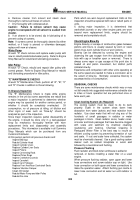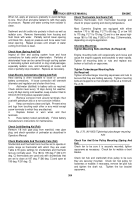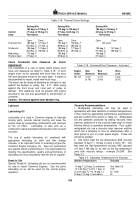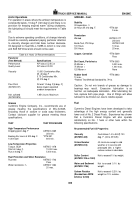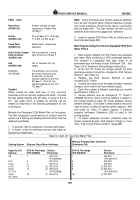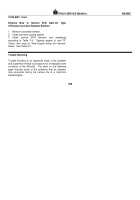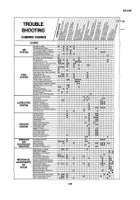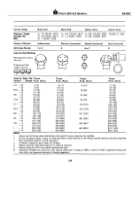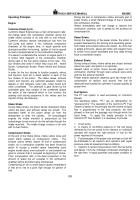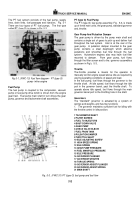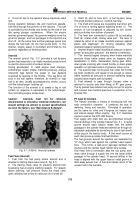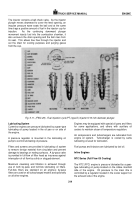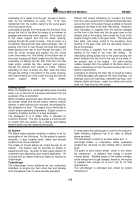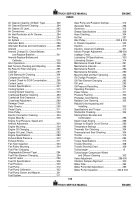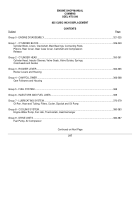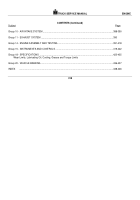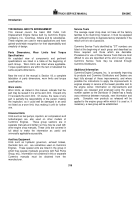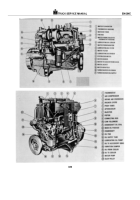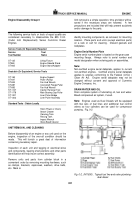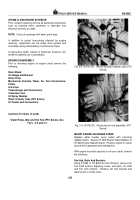TM-5-3805-254-14-P-2 - Page 317 of 894
TRUCK SERVICE MANUAL
ENGINE
2.
It cuts off fuel to the injectors above maximum rated
rpm.
During operation between idle and maximum speeds,
fuel flows through the governor to the injectors.
This fuel
is controlled by the throttle and limited by the size of the
idle spring plunger counterbore.
When the engine
reaches governed speed, the governor weights move the
governor plunger, and fuel passages to the injectors are
shut off.
At the same time another passage opens and
dumps the fuel back into the main pump body.
In this
manner, engine speed is controlled and limited by the
governor regardless of throttle position.
Aneroid
The aneroid control, Fig.
5-7, provides a fuel by-pass
system that responds to air intake manifold pressure and
is used for close control of exhaust smoke.
During
acceleration
or
rapid
engine
load
changes,
turbocharger speed (intake manifold pressure) change
inherently lags behind the power or fuel demand
exercised by opening of the throttle.
This lag does not
exist in the fuel system; therefore, an overrich or high
fuel to air ratio, usually accompanied by smoke, occurs
until the turbocharger "catches up".
The function of the aneroid is to create a lag in fuel
system so response is equivalent to the turbocharger,
thus controlling engine smoke level.
Caution:
Aneroids
must
not
be
removed,
disconnected or otherwise rendered ineffective, nor
should settings be altered to exceed specifications
as set at the factory, see "Maintenance Schedule".
Back to Top

